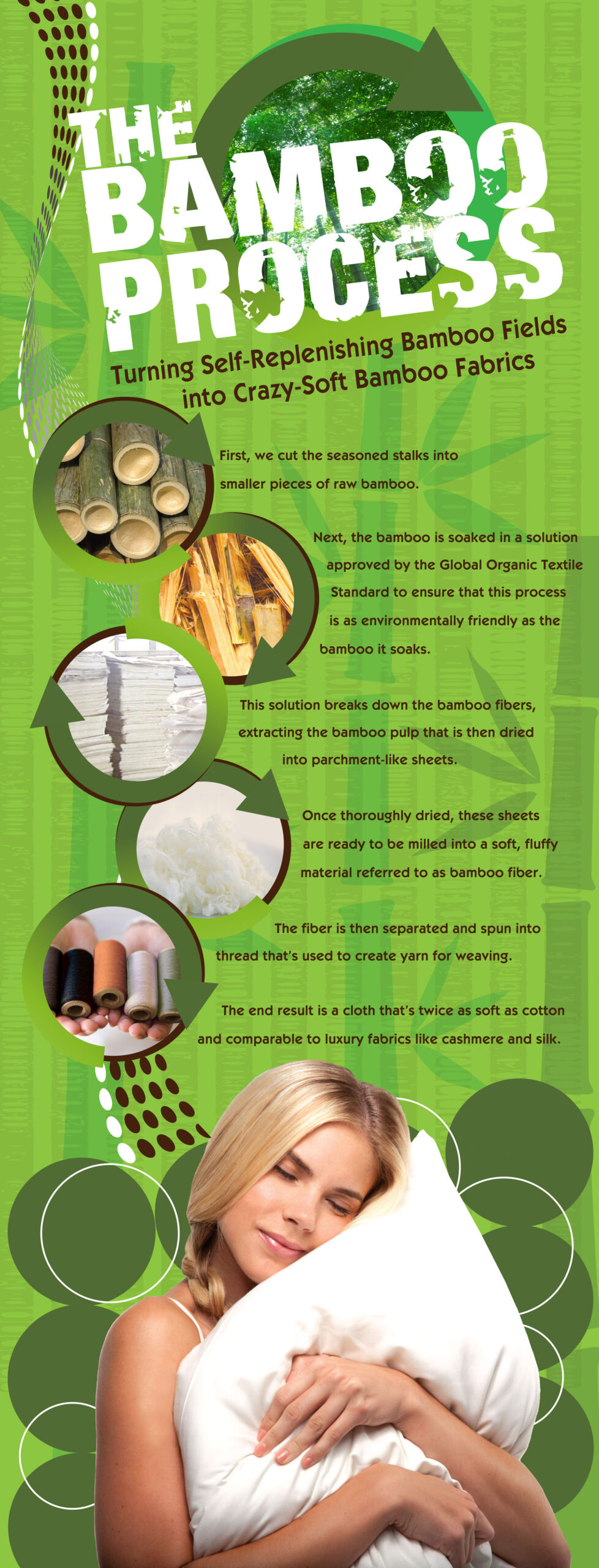The soft, silky smoothness of bamboo sheets is a result of two distinctly separate but critical elements – the high quality bamboo and the careful manufacturing process. In order to get the results we want and you expect, everything from the harvesting methods to the creation of the viscose and bamboo yarn must contribute to the final results.
We’ve shared our bamboo process before, but let’s take a closer look at these steps and see how they impact the feel of your sheets.
Harvesting the Bamboo
Bamboo may grow extremely fast, but that doesn’t make it okay to just roll in with environmentally unfriendly harvesting methods. We still want to make sure that we harvest our resources in the most sustainable way possible.
There are, of course, several things about bamboo that make harvesting it more earth-friendly than the harvesting process for many other textiles.
For starters, since bamboo is a grass, not a tree, we can harvest usable stalks while leaving the roots in place where new chutes will immediately start to grow again. Some species of bamboo even come back stronger after they’ve been cut once.
Bamboo crops can also be grown on lands that normally aren’t suitable for other types of forestry or farming applications, so it isn’t taking over space that could be more effectively used elsewhere. More importantly, the natural antimicrobial properties of the plant mean it can be grown without any chemical pesticides, which means a more natural, comfortable end product.
Once the bamboo has reached a certain maturity, we can cut the seasoned stalks into smaller pieces to prepare it for the manufacturing phase.
Turning Plants into Threads
The manufacturing process starts with a long soak in a closed loop process. We use a special solution to break down bamboo fibers so we can extract the pulp and dry it into parchment-like sheets. This process has to be done in that closed process to make sure the solution doesn’t escape into the environment and mitigate the previous efforts toward environmental friendliness.
This process also lets us keep the natural moisture-wicking and hypoallergenic properties of the bamboo plant in the final product.
The dried sheets are then milled into a soft material called viscose, which can then be spun into the threads that are used in the sheet.
While this bamboo thread is extremely soft and smooth on its own, there is still one more thing about the manufacturing process that makes it stand out even more.
Since bamboo threads are naturally stronger than other textiles, they can stretch the entire length of the sheet. Shorter strands may end in the middle of the sheet, causing a slightly rougher feel, but bamboo doesn’t have any such problems.
When we combine the natural qualities of bamboo and effective, environmentally friendly manufacturing processes, the results are always soft and luxurious sheets that can change the way you sleep.

